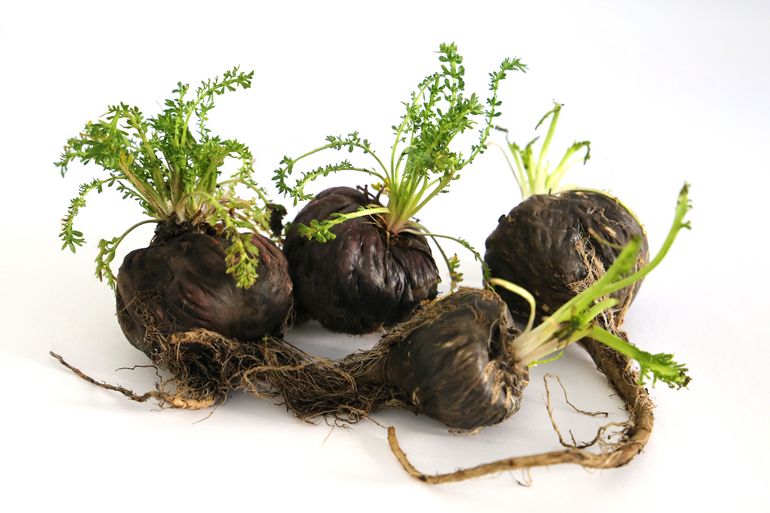Media release, 24 May 2024
For IP professionals
This is the portal for professionals working in the field of intellectual property. Here you'll find direct access to all necessary resources.
Quick links
New international treaty on intellectual property, genetic resources and associated traditional knowledge adopted
After around 20 years of negotiations, the World Intellectual Property Organization (WIPO) succeeded in adopting a new treaty on intellectual property and genetic resources in the small hours of 24 May 2024. The new treaty stipulates that the origin of genetic resources and the associated traditional knowledge must be disclosed in patent applications. The aim of this measure is to increase transparency and thus help to better protect biodiversity. The Swiss Federal Institute of Intellectual Property (IPI) represented Switzerland in the negotiations together with the Federal Department of Foreign Affairs (FDFA).
Genetic resources and the associated traditional knowledge of Indigenous Peoples and local communities are important components of biodiversity. They can serve as a starting point for innovations in different areas. For example, traditional knowledge about the healing properties of a particular plant can facilitate the research and development of new medicinal substances. Genetic resources and traditional knowledge also play an important role in innovation in the fields of cosmetics, agriculture and food, as well as biotechnology. This means that inventions based on these resources or on this knowledge may also be included in patent applications.
Under the Convention on Biological Diversity, all countries have sovereign rights over their natural resources and therefore also the right to regulate access to their own genetic resources. This is why the biodiversity-rich countries from the Global South and in particular Indigenous Peoples have been calling for years for the origin of genetic resources and traditional knowledge to be disclosed in patent applications. This transparency measure is also intended to prevent cases of so called ‘biopiracy’ and facilitate the sharing of benefits arising from the utilisation of these resources.
Content of the new treaty
The new treaty has two objectives. Firstly, it aims to enhance the efficacy, transparency and quality of the patent system in relation to genetic resources and the associated traditional knowledge. Secondly, it aims to ensure that patents are only granted in this field if they are new and inventive.
These objectives are to be achieved by making it obligatory to disclose the origin of genetic resources and traditional knowledge in patent applications, namely the country of origin of the genetic resources, that is, the country in which they originally occur in nature, must be disclosed. If the country of origin is not known, another source should be disclosed from which the inventor obtained the genetic resources (e.g. a gene bank or a botanical garden). Similar rules apply for the associated traditional knowledge. Appropriate and effective sanctions are to be applied for non-compliance with this disclosure requirement. The treaty also provides for information systems to help patent examiners find relevant information on genetic resources and traditional knowledge.
The Swiss legislation already requires the disclosure of the source of genetic resources and the associated traditional knowledge to be disclosed in patent applications (Art. 49a Patents Act). The conclusion of the negotiations in Geneva does not create any new obligations for Switzerland under international law. Switzerland now has one year time to sign the treaty and then to ratify it.
Genetic resources and traditional knowledge using the example of the maca plant
The maca plant (lepidium meyenii) is a genetic resource that originally comes from the Peruvian Andes. Neither the plant itself nor the traditional knowledge of the indigenous peoples in the Andes about the uses of the maca plant can be patented. By contrast, inventions such as a new active ingredient that is isolated, modified and stabilised from this plant can be patented. Such new active ingredients can be used in the development of new drugs or food additives, for example.
Under the new treaty, patent applicants will in future have to state where they obtained the maca plant. If they also used traditional knowledge about the plant in the development of their invention, they must disclose the source of this knowledge too.
Thanks to the new disclosure requirement, patent examiners will be able to determine more easily whether an invention is actually patentable. Moreover, the transparency created in this way will help Indigenous Peoples and the countries of origin of the genetic resources to identify the inventions in which these resources or knowledge have been used. This will make it possible to improve the protection of both the resources concerned and the associated knowledge in future. Additionally, the new transparency measures will also make it easier to share the benefits arising from the utilisation of these genetic resources or the associated traditional knowledge (e.g. sharing of knowledge or profits from the maca plant). The sharing of benefits is an obligation set out in the Convention on Biological Diversity, among other agreements.

